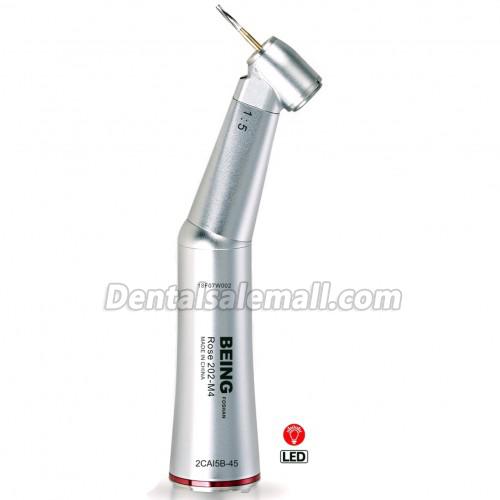Dental Handpieces: An Overview Of The Options
Add-Ons
Add-ons can expand the utility of handpieces in the dental office even more. Some offer greater intraoral visibility with LED light attachments, and those with a 360° swivel head are more comfortable for the operator. Others are designed to handle a wide variety of different heads and contra angles.
Contra angles in particular vastly expand the function of handpieces by giving operators the ability to adjust their handpieces to reach working surfaces anywhere in the mouth—including areas that are difficult to reach—without straining or changing instruments.( Click here to buy contra-angle speed-increasing handpiece )

A Matter of Choice
As is the case with much of the ever-changing technology and tools, clinicians’ preferences are influenced by their own comfort and facility.
This was suggested by the findings of Strassler and colleagues, who conducted an in vitro study to compare the quality of cavity preparations fabricated using a high-speed high-torque (electric motor) handpiece with those using a high-speed low-torque (air turbine) handpiece.The study included 86 “novices,” dental students, each of whom cut two Class I preparations, one with an air turbine handpiece and the other with an electric motor high-speed handpiece.
The results were mixed. “In preparation criteria, the electric motor high-speed handpiece had a higher average grade than did the air dental turbine unit (5.07 and 4.90, respectively). For refinement, the average grade for the air turbine high-speed handpiece was greater than that for the electric motor high-speed handpiece (5.72 and 5.52, respectively),” the authors wrote. “The differences were not statistically significant.”
Strassler noted, “Based on the results, there were no significant differences between the handpieces used. However, one must consider his or her own clinical practice. In my experience for routine operative dentistry preparations, I can achieve results with both types of handpieces. But, for crown and bridge preparations, I prefer the efficiency of an electric motor high-speed high-torque handpiece. A practitioner should try both handpieces to make a decision on which he or she is better suited.”
Previous:How does a brushless dental micro motor work?
